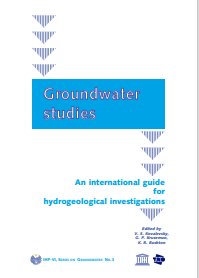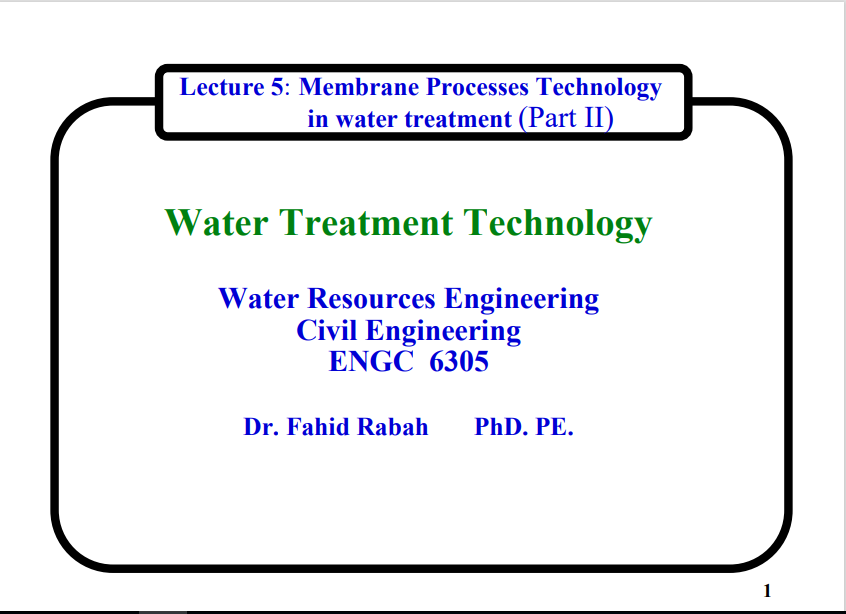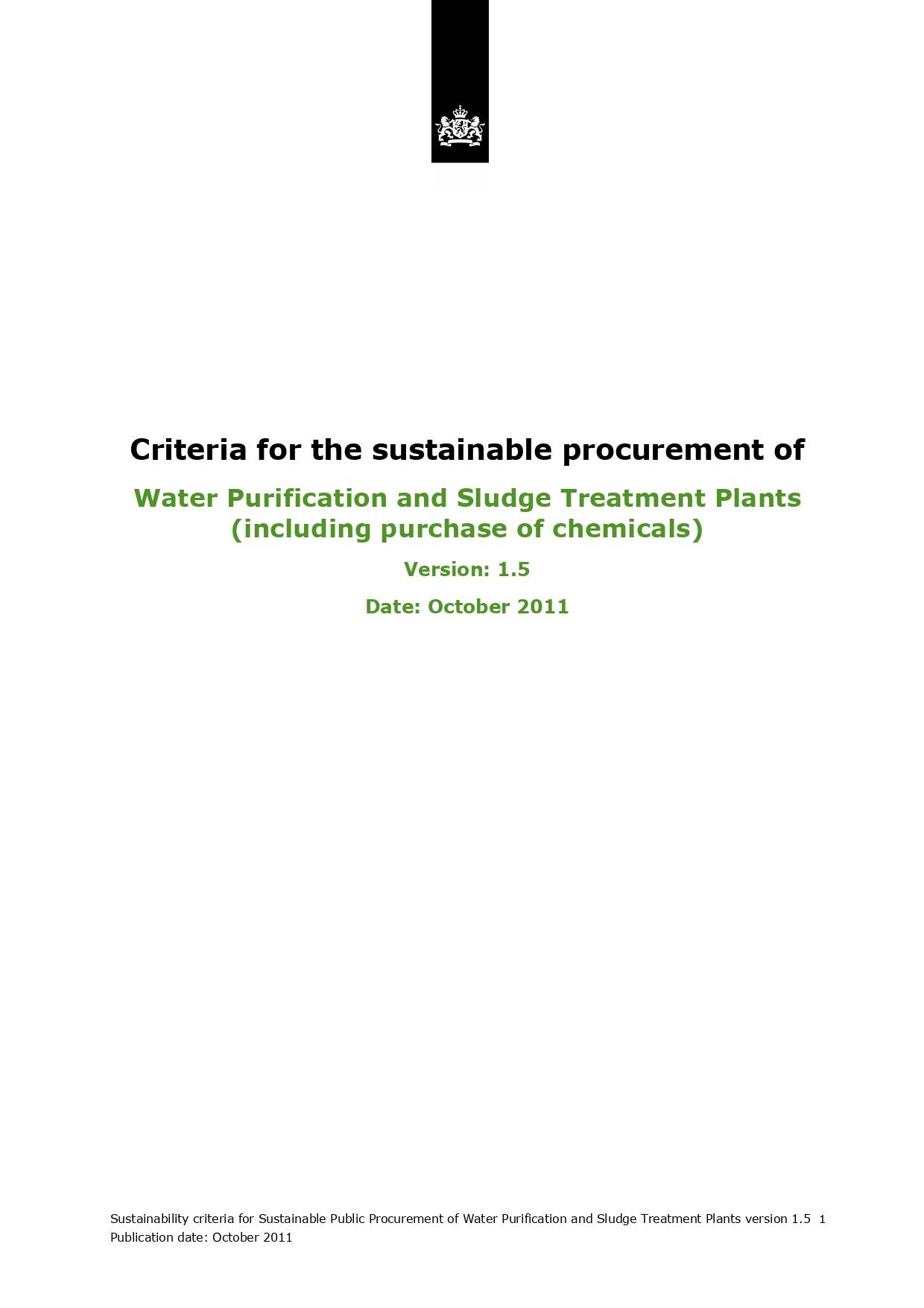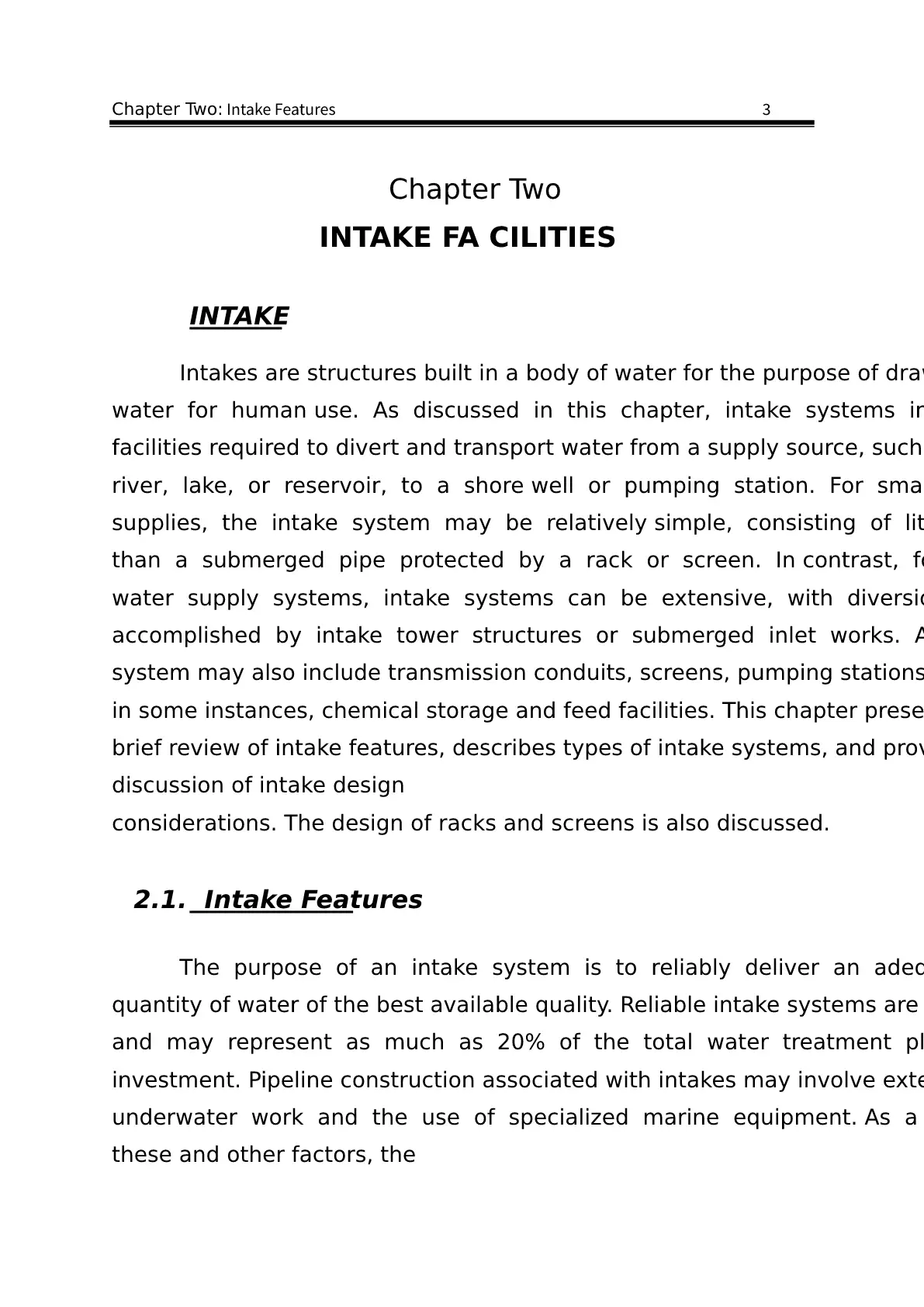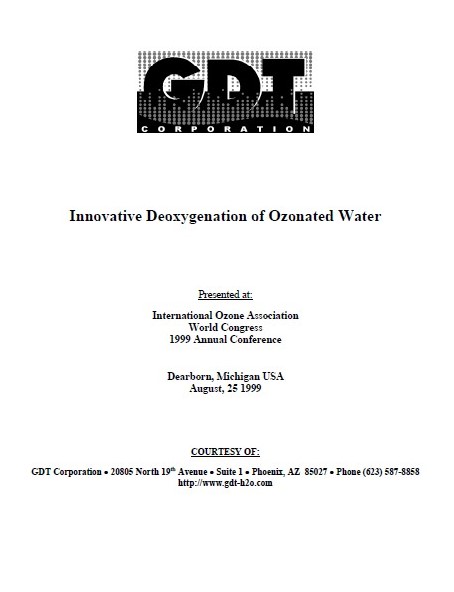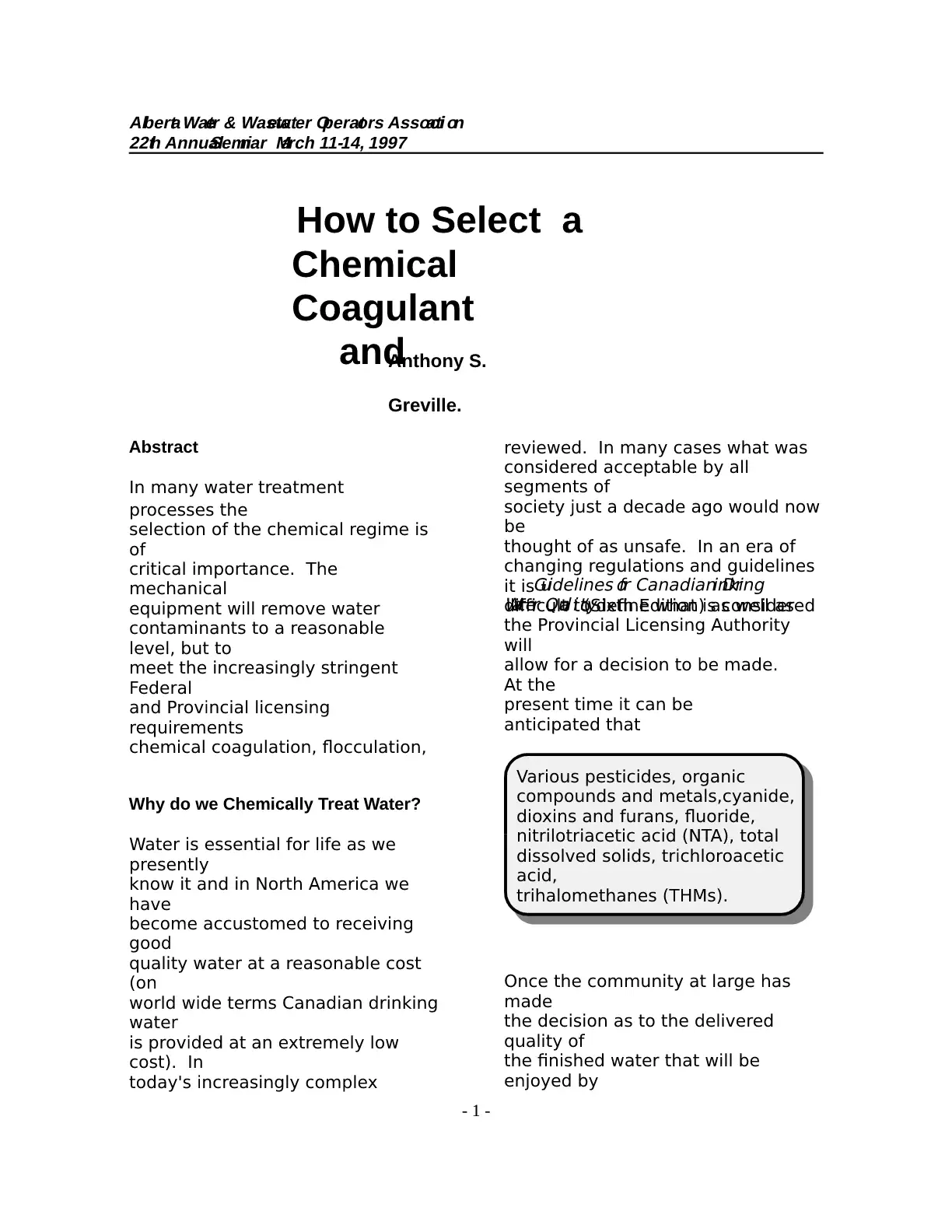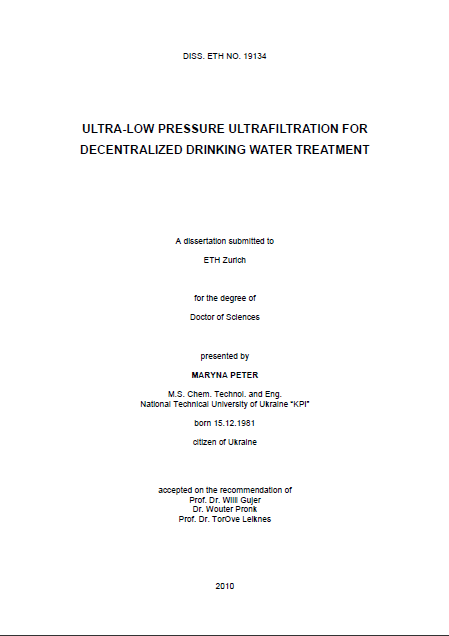Ground Water Studies
Hydrological cycle
Most water on our planet occurs as saline water in the oceans and deep underground or is contained in polar ice caps and the permanent ice cover of the high mountain ranges. So, only 30 million km3 of fresh water, which is only 2 percent of all water, plays an active part in the hydrological cycle and in the maintenance of all life on the continents. The hydrological cycle depicts how part of the ocean water evaporates, the water vapor turns into freshwater precipitation (rain, hail, snow) on the earth’s surface (seas, land), then flows over the land surface (glaciers, runoff, streams) and partly infiltrates into the soil (soil water) to be used by the vegetation (evapotranspiration) or to recharge the groundwater bodies. Subsequently, most groundwater returns either by being pumped or by natural outflow, to surface water bodies which subsequently discharge back into the sea.
Ground Water Studies
Hydrological cycle
Most water on our planet occurs as saline water in the oceans and deep underground or is contained in polar ice caps and the permanent ice cover of the high mountain ranges. So, only 30 million km3 of fresh water, which is only 2 percent of all water, plays an active part in the hydrological cycle and in the maintenance of all life on the continents. The hydrological cycle depicts how part of the ocean water evaporates, the water vapor turns into freshwater precipitation (rain, hail, snow) on the earth’s surface (seas, land), then flows over the land surface (glaciers, runoff, streams) and partly infiltrates into the soil (soil water) to be used by the vegetation (evapotranspiration) or to recharge the groundwater bodies. Subsequently, most groundwater returns either by being pumped or by natural outflow, to surface water bodies which subsequently discharge back into the sea.
Membrane Process Technology
Reverse Osmosis (RO):
Reverse Osmosis is the forced passage of a solvent (e.g. water) through a membrane against the natural osmotic pressure to
accomplish separation of the solvent from a solution of dissolved solids.
If a pressure equal to the Osmotic pressure ( Δπ ) is applied to the side of higher salt content, the water flow from lower to
higher salt concentration will stop. If an additional pressure is exerted the water flow will be reversed and to the direction from
high to low salt concentration producing fresh water.
The membrane allow the passage of the solvent while blocking the passage of salt ions. The salt ions or the dissolved matter are called Solutes. However, some salts move with water since each membrane has a rejection efficiency that is less than 100%.
Membrane Process Technology
Reverse Osmosis (RO):
Reverse Osmosis is the forced passage of a solvent (e.g. water) through a membrane against the natural osmotic pressure to
accomplish separation of the solvent from a solution of dissolved solids.
If a pressure equal to the Osmotic pressure ( Δπ ) is applied to the side of higher salt content, the water flow from lower to
higher salt concentration will stop. If an additional pressure is exerted the water flow will be reversed and to the direction from
high to low salt concentration producing fresh water.
The membrane allow the passage of the solvent while blocking the passage of salt ions. The salt ions or the dissolved matter are called Solutes. However, some salts move with water since each membrane has a rejection efficiency that is less than 100%.
Criteria For The Sustainable Procurement of Water Purification and Sludge Treatment Plants (including purchase of chemicals)
Introduction
The Dutch government would like to take concrete steps towards a sustainable society and wants to set a good example. If the public authorities pursue sustainable procurement, the sustainable products market will receive a substantial boost. The different government authorities have set objectives for themselves with regard to sustainable public procurement. To achieve the objectives, sustainability criteria have been developed for a large range of the Products, Services, and Public Works that the authorities procure. These criteria are not regulations but are intended to provide a point of reference to procure sustainably. This document focuses on the criteria for the Water Purification and Sludge Treatment Plants product group, the elaboration of the criteria in specification texts, and a more detailed assessment of the criteria, as well as a number of points for attention in the pre-and post-procurement stages. Additional background information and considerations regarding the content of the criteria can be found in the criteria document on the PIANOo (Dutch Public Procurement Expertise Centre) website, available in Dutch only.
Criteria For The Sustainable Procurement of Water Purification and Sludge Treatment Plants (including purchase of chemicals)
Introduction
The Dutch government would like to take concrete steps towards a sustainable society and wants to set a good example. If the public authorities pursue sustainable procurement, the sustainable products market will receive a substantial boost. The different government authorities have set objectives for themselves with regard to sustainable public procurement. To achieve the objectives, sustainability criteria have been developed for a large range of the Products, Services, and Public Works that the authorities procure. These criteria are not regulations but are intended to provide a point of reference to procure sustainably. This document focuses on the criteria for the Water Purification and Sludge Treatment Plants product group, the elaboration of the criteria in specification texts, and a more detailed assessment of the criteria, as well as a number of points for attention in the pre-and post-procurement stages. Additional background information and considerations regarding the content of the criteria can be found in the criteria document on the PIANOo (Dutch Public Procurement Expertise Centre) website, available in Dutch only.
Ultra-Low Pressure Ultrafiltration For Decentralized Drinking Water Treatment
Abstract
Inadequate access to microbiologically safe drinking water continuously threatens the health and well-being of about a billion people, primarily in developing countries. Effective, lowcost and robust technologies are needed to redress this situation and meet the Millennium Development Goals for drinking water. Although ultrafiltration technology has become affordable for decentralized water treatment in developing countries, its widespread application is limited by membrane fouling and biofouling. Conventionally, regular backflushing, disinfection and chemical cleaning are applied in order to limit fouling, resulting in complex, expensive and maintenance intensive systems not suitable for
application in developing countries. The goal of this thesis was to investigate a new approach to ultrafiltration and fouling control in order to develop a low-cost membrane-based decentralized system and reduce energy and chemical demand in membrane systems in general. The stabilization of flux during dead-end ultrafiltration without backflushing, cross-flow or chemical cleaning under ultra-low pressure has not been observed before. This phenomenon allows gravity-driven ultrafiltration of surface water without any maintenance and pretreatment
at stable flux values of 4-10 L·h-1·m-2 for at least 6 months of operation at a hydrostatic pressure of 40-150 mbar, which corresponds to a height difference of about 0.4 - 1.5 m. In this thesis, the phenomenon of flux stabilization is documented and evidence is provided that flux stabilization is related to biological processes leading to structural changes in the fouling layer. The development of cavities, channel networks and heterogeneous structures
causes the decrease in resistance of the fouling layer. These processes counteract the increase of resistance of the fouling layer due to deposition, physico-chemical interactions and pore constriction due to irremovable fouling. The concentrations of biopolymers and low molecular weight compounds, the dissolved oxygen concentration and the concentration of colloidal humic acids are the major factors affecting flux stabilization. It is concluded that
biofouling, always considered to be the major limitation of membrane processes and associated with reduced performance, actually causes stabilization of flux. The phenomenon of flux stabilization can be implemented in simple low cost gravity-driven ultrafiltration systems for decentralized drinking water treatment. The stable flux value of 4-
10 L·h-1·m-2 is sufficient to cover daily needs of water for drinking and cooking for a family of five people using less than 0.5 m2 of membrane. While no pretreatment, pumps, chemicals or process control is required, the system costs could be kept low, especially when such systems can be produced or assembled locally. Furthermore, possibilities exist to further increase the capacity of the system. It is shown that the flux can be enhanced by intermittent operation as
well as manual forward flushing of the membrane.
Ultra-Low Pressure Ultrafiltration For Decentralized Drinking Water Treatment
Abstract
Inadequate access to microbiologically safe drinking water continuously threatens the health and well-being of about a billion people, primarily in developing countries. Effective, lowcost and robust technologies are needed to redress this situation and meet the Millennium Development Goals for drinking water. Although ultrafiltration technology has become affordable for decentralized water treatment in developing countries, its widespread application is limited by membrane fouling and biofouling. Conventionally, regular backflushing, disinfection and chemical cleaning are applied in order to limit fouling, resulting in complex, expensive and maintenance intensive systems not suitable for
application in developing countries. The goal of this thesis was to investigate a new approach to ultrafiltration and fouling control in order to develop a low-cost membrane-based decentralized system and reduce energy and chemical demand in membrane systems in general. The stabilization of flux during dead-end ultrafiltration without backflushing, cross-flow or chemical cleaning under ultra-low pressure has not been observed before. This phenomenon allows gravity-driven ultrafiltration of surface water without any maintenance and pretreatment
at stable flux values of 4-10 L·h-1·m-2 for at least 6 months of operation at a hydrostatic pressure of 40-150 mbar, which corresponds to a height difference of about 0.4 - 1.5 m. In this thesis, the phenomenon of flux stabilization is documented and evidence is provided that flux stabilization is related to biological processes leading to structural changes in the fouling layer. The development of cavities, channel networks and heterogeneous structures
causes the decrease in resistance of the fouling layer. These processes counteract the increase of resistance of the fouling layer due to deposition, physico-chemical interactions and pore constriction due to irremovable fouling. The concentrations of biopolymers and low molecular weight compounds, the dissolved oxygen concentration and the concentration of colloidal humic acids are the major factors affecting flux stabilization. It is concluded that
biofouling, always considered to be the major limitation of membrane processes and associated with reduced performance, actually causes stabilization of flux. The phenomenon of flux stabilization can be implemented in simple low cost gravity-driven ultrafiltration systems for decentralized drinking water treatment. The stable flux value of 4-
10 L·h-1·m-2 is sufficient to cover daily needs of water for drinking and cooking for a family of five people using less than 0.5 m2 of membrane. While no pretreatment, pumps, chemicals or process control is required, the system costs could be kept low, especially when such systems can be produced or assembled locally. Furthermore, possibilities exist to further increase the capacity of the system. It is shown that the flux can be enhanced by intermittent operation as
well as manual forward flushing of the membrane.


